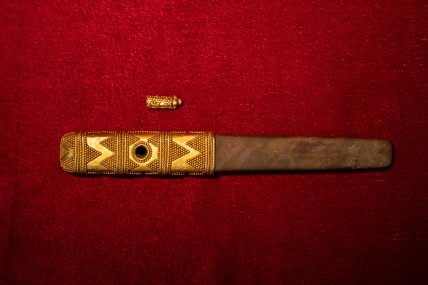Golden ornaments belonging to the Sarmatians, possibly once worn by kings, have been discovered in Kazakhstan (photos included).
From modern Ukraine to China, the Sarmatians were a nomadic people who dominated the steppes between Eastern Europe and Central Asia from the 5th century BC to the 4th century AD. They are first mentioned in Persian written sources. Part of their territory is now Kazakhstan.
It was here that archaeologists discovered a burial site dating back 2400 years, where unique gold adornments depicting predators were found. This find, dated to the 5th century BC, indicates the high status of those buried – likely belonging to the Sarmatian nobility or even the royal family.

Jewelry and weapons were excavated from three burial mounds in western Kazakhstan, in the Atyrau region, which was once the center of Sarmatia. In total, over 1000 artifacts were retrieved from these mounds, around 100 of which are gold items crafted in the traditional Sarmatian "animalistic" style. The decorations feature figures of leopards, tigers, and wild boars that inhabited this region more than two thousand years ago.

In addition to gold elements, jewelry, household items, and silver "pictograms" representing saiga antelope and wolves were also found.
Previously, "Telegraph" reported on the Ukrainian catacomb culture. They not only used chariots but also constructed ziggurats.